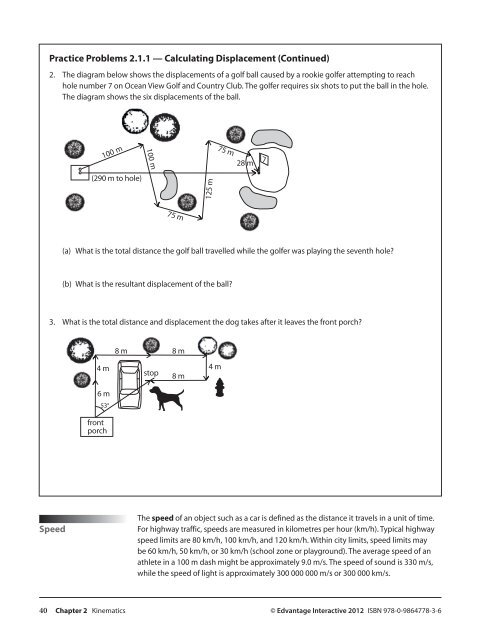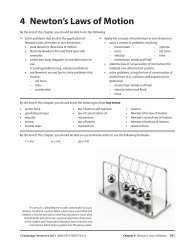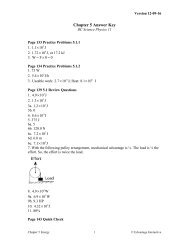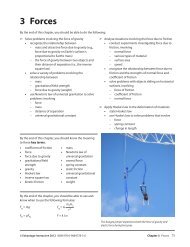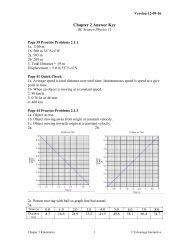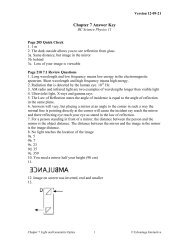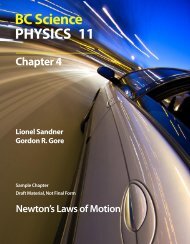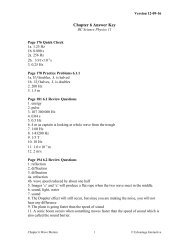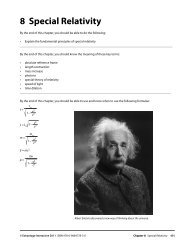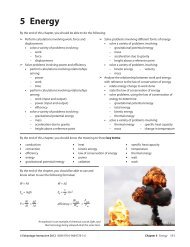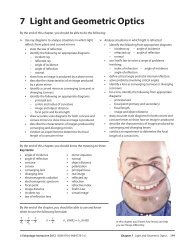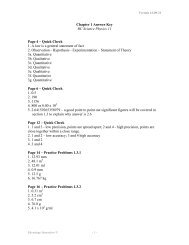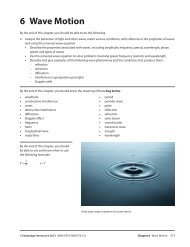2 Kinematics - BC Science Physics 11
2 Kinematics - BC Science Physics 11
2 Kinematics - BC Science Physics 11
Create successful ePaper yourself
Turn your PDF publications into a flip-book with our unique Google optimized e-Paper software.
Practice Problems 2.1.1 — Calculating Displacement (Continued)<br />
2. The diagram below shows the displacements of a golf ball caused by a rookie golfer attempting to reach<br />
hole number 7 on Ocean View Golf and Country Club. The golfer requires six shots to put the ball in the hole.<br />
The diagram shows the six displacements of the ball.<br />
�����<br />
���������������<br />
�����<br />
����<br />
�����<br />
����<br />
����<br />
(a) What is the total distance the golf ball travelled while the golfer was playing the seventh hole?<br />
(b) What is the resultant displacement of the ball?<br />
3. What is the total distance and displacement the dog takes after it leaves the front porch?<br />
Speed<br />
���<br />
���<br />
���<br />
������<br />
�����<br />
��� ���<br />
����<br />
���<br />
���<br />
The speed of an object such as a car is defined as the distance it travels in a unit of time.<br />
For highway traffic, speeds are measured in kilometres per hour (km/h). Typical highway<br />
speed limits are 80 km/h, 100 km/h, and 120 km/h. Within city limits, speed limits may<br />
be 60 km/h, 50 km/h, or 30 km/h (school zone or playground). The average speed of an<br />
athlete in a 100 m dash might be approximately 9.0 m/s. The speed of sound is 330 m/s,<br />
while the speed of light is approximately 300 000 000 m/s or 300 000 km/s.<br />
40 Chapter 2 <strong>Kinematics</strong> © Edvantage Interactive 2012 ISBN 978-0-9864778-3-6


